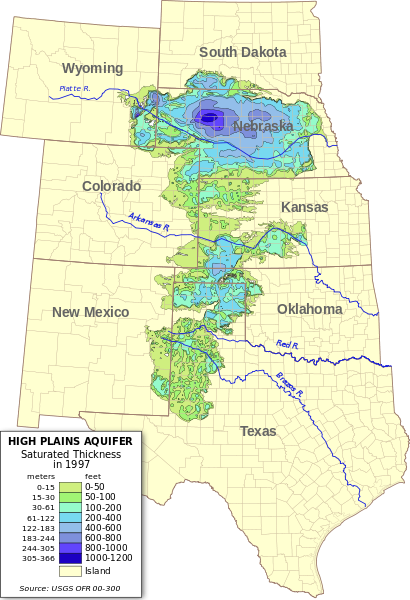There is no doubt that the agriculture industry occupies a large percentage of the nation’s water consumption. Generally, about 70% of the water we take from rivers and groundwater are used for irrigation and only about 10% is used for domestic use. In California, the number is 80%, due its prominent agriculture industry as well as an arguable corrupt water policy. The High Plains region of the United States is one place of particular concern for water conservationists, due to its unique relationship with water and the Ogallala Aquifer. The Ogallala Aquifer supplies a large amount of fresh water in the High Plains region for irrigation, stretching through 8 states.

The Aquifer was once recharged by the Rocky Mountains between 5.332 million to 2.588 million years ago in the Pliocene epoch, but no longer is recharged via the Rockies, making it a nearly non-renewable resource. In recent years, this resource has begun to plummet in various places due to over-extraction by agriculture companies. Some states are better than others in regard to water conservation but overall the aquifer is depleting, and more work needs to be done.
There are positive changes happening across the world to save water from implementing drip irrigation systems to produce less water waste and evaporation, to storing rain water. Different water saving practices are being implemented in different parts of the country. Early in 2019, The Nature Conservancy worked with farmers in Nebraska to implement a water saving irrigation system that has the potential to save 2.4 billion gallons over 3 years, enough to supply 7,200 households.
Unfortunately, there are many large companies continuing to do business as usual, which could affect the millions of people who rely on the Ogallala Aquifer on a daily basis. With more public input and advocacy, the Ogallala water problem can be mitigated and the region can continue to thrive.
For more information visit: https://www.ogallalawater.org

